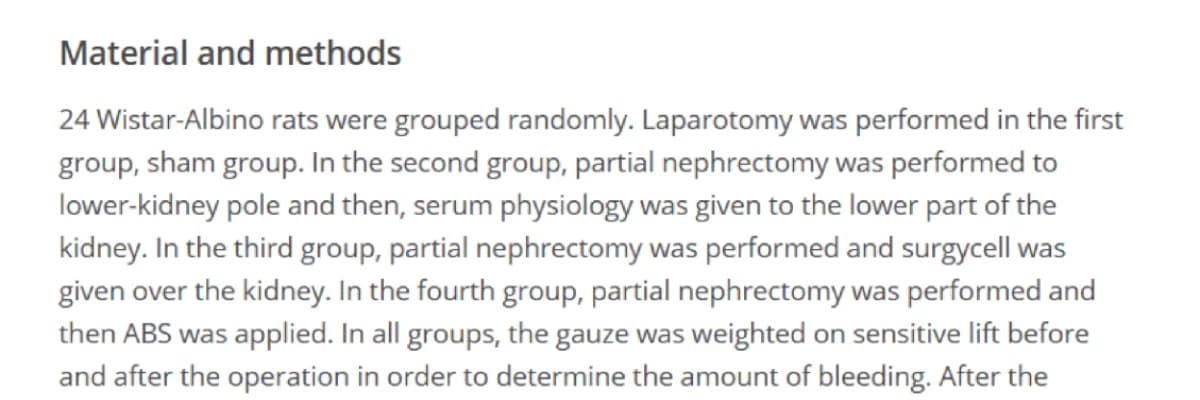The effect of ankaferd to stop bleeding in experimental partial nephrectomy (scı-scı expandıe)

The effect of ankaferd to stop bleeding in experimental partial nephrectomy.
Yalcinkaya FR 1,
Kerem M ,
Guven EO ,
Gokce A ,
Davarci M
Author information
Bratislavske Lekarske Listy, 01 Jan 2011, 112(12):676-678
PMID: 22372331
Share this article Share with emailShare with twitterShare with linkedinShare with facebook
Abstract
Aims
In kidney surgery, bleeding is one of the most important issues. In partial nephrectomy, as a "blood stopper", we used surgycell and ankaferd which is used traditionally in Turkish medicine.
Material and methods
24 Wistar-Albino rats were grouped randomly. Laparotomy was performed in the first group, sham group. In the second group, partial nephrectomy was performed to lower-kidney pole and then, serum physiology was given to the lower part of the kidney. In the third group, partial nephrectomy was performed and surgycell was given over the kidney. In the fourth group, partial nephrectomy was performed and then ABS was applied. In all groups, the gauze was weighted on sensitive lift before and after the operation in order to determine the amount of bleeding. After the subjects were left alive for 5 hours, the levels of blood urea, and creatinine and kidney histopathology were evaluated.
Results
No meaningful difference between the groups was found as for the levels of blood urea, and creatinine and the kidney histopathology. Bleeding amount was diminished significantly in the group 4, to which ankaferd was applied.
